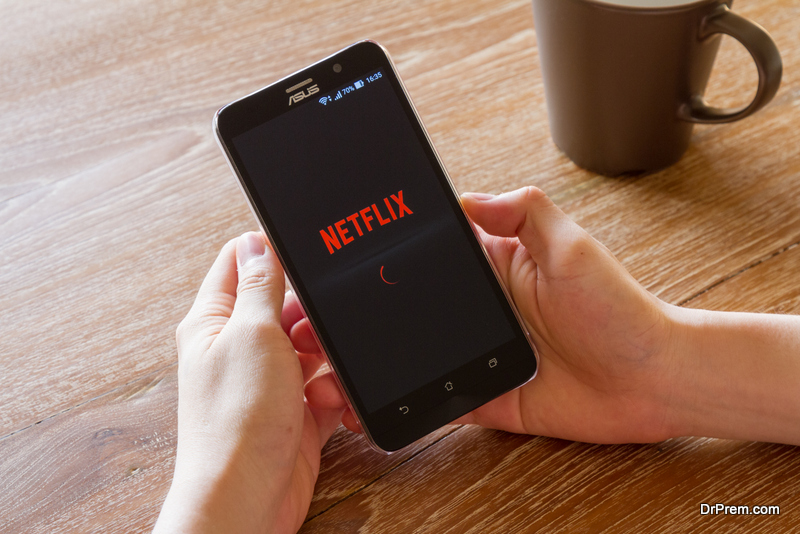“We didn’t do anything wrong, but somehow we lost.”
- Stephan Elop, Former CEO Nokia
It’s hard not to get disappointed when even your best is not good enough. This statement could pass very well to cellphone manufacturer Nokia, which went from being the leading cellphone manufacturing firm to lose pretty much everything. Although the firm is still alive, it’s impossible for it to reach the heights that it once did. However, Nokia isn’t the only company that faced such a fate. No matter where you look, you’d find many examples of companies which were once leading the league, but are now nowhere to be seen.
One such firm that seems to be following this same curve is Netflix. At present, it is the world’s leading streaming entertainment with 158 million paid subscribers in over 190 countries. But it might not remain at the top for long as the scenario is no longer the same. In short, Netflix is doomed. But before we find out why it is doomed, let us take a look at why Netflix is successful to begin with.
6 Reasons behind the former success of Netflix
1. The first in the game
 Did you know when did Netflix start? Was it in late 2000s? No! It started in 1997 as a firm that sent DVDs by mail. And it didn’t take long for Netflix to be the king of DVD-mail-service. While other firms working on the same or similar concepts might have died down once DVDs became obsolete. Netflix didn’t. Rather than simply selling stuff licensed to someone else, Netflix started obtaining license to older movies and TV shows. This made Netflix an exclusive for people who were obsessed with the classics, and thus it thrived. In fact, Netflix still has the right to many classic TV shows like Twin Peaks, Cheers, etc. Finally, without stopping its Blu-ray and DVD rental services, Netflix started streaming services in 2010, and started producing its own shows in 2012.
Did you know when did Netflix start? Was it in late 2000s? No! It started in 1997 as a firm that sent DVDs by mail. And it didn’t take long for Netflix to be the king of DVD-mail-service. While other firms working on the same or similar concepts might have died down once DVDs became obsolete. Netflix didn’t. Rather than simply selling stuff licensed to someone else, Netflix started obtaining license to older movies and TV shows. This made Netflix an exclusive for people who were obsessed with the classics, and thus it thrived. In fact, Netflix still has the right to many classic TV shows like Twin Peaks, Cheers, etc. Finally, without stopping its Blu-ray and DVD rental services, Netflix started streaming services in 2010, and started producing its own shows in 2012.
2. Modest Price
In order to get more customers, Netflix has deliberately kept its prices very modest. However, because of a high customer-retention rate, all this has paid off. Although Netflix is spending too damn much to keep its content rolling, but when you divide it with the 158 million subscribers, it doesn’t come out to be that much. More importantly, this income isn’t unstable income like that of movies where your profit depends upon how much the movie grosses. Netflix earns a regular monthly income free from such uncertainties.
3. Good analytics
 Netflix collects data from all of its subscribers and then uses data analytics models to discovers its users’ preferences and buying pattern. This includes collecting data regarding how a customer respond to a particular TV show, when they pause it, when they stream backwards, when they switch to the next episode, etc. This helps Netflix in creating a detailed profile of its users, which works like wonders. The customer retention rate of Netflix is 93% which is significantly more when compared to 75% of Amazon Prime and 64% of Hulu. The success of shows like ‘House of Cards’ and ‘Orange is the new black’ shows how good Netflix is at predicting its customer behavior.
Netflix collects data from all of its subscribers and then uses data analytics models to discovers its users’ preferences and buying pattern. This includes collecting data regarding how a customer respond to a particular TV show, when they pause it, when they stream backwards, when they switch to the next episode, etc. This helps Netflix in creating a detailed profile of its users, which works like wonders. The customer retention rate of Netflix is 93% which is significantly more when compared to 75% of Amazon Prime and 64% of Hulu. The success of shows like ‘House of Cards’ and ‘Orange is the new black’ shows how good Netflix is at predicting its customer behavior.
4. No ads
When you are hooked on to a show or are in the middle of an interesting movie, the last thing that you might want to see is an advertisement. However, no matter whether you are on YouTube or watching Television at home, you are bound to come across them, users generally tend to skip these ads. Netflix, on the other hand, has come up with a reliable solution. The name of this solution is product placement. On selective Netflix shows you’d come across hidden advertisements that won’t spoil the fun.
For example, in its shows like ‘Love’ the main character very visibly books an Uber. Moreover, on its shows like Stranger Things, you are very likely to come across logos of Coca Cola and Burger King. According to estimates, Coca Cola alone has received benefit roughly equivalent to $4 million from its product placement on Netflix shows. Curiously enough, Netflix has denied getting paid from either Coca Cola or Burger King.
5. International audience
 With its users in over 190 countries, Netflix is one of the most globally popular brands out there. Thanks to analytics, Netflix has found a way to offer content to its users that’s adapted specifically for the region. In addition, it also offers shows in Spanish, German, Hindi etc. So, it’s a win-win situation for both the audience and the platform.
With its users in over 190 countries, Netflix is one of the most globally popular brands out there. Thanks to analytics, Netflix has found a way to offer content to its users that’s adapted specifically for the region. In addition, it also offers shows in Spanish, German, Hindi etc. So, it’s a win-win situation for both the audience and the platform.
6. Exploited binge watching
Back in 2016, Netflix decided to put entire seasons of show at once. This was a major breakthrough in the promotion of binge watching. Now the users could watch as many episodes as they liked and whenever they liked. But, as is common among the Television users, rather than watching one or two episodes in a day, they were quite likely to watch finish the entire season.
Netflix has become a part of popular culture. ‘Netflix and Chill’ has become a very common phrase now. In fact, there are also Television Remotes that have a Netflix button on them. All this has resulted in a considerable fanbase.But, does Netflix have what it takes to maintain its position? We don’t think so. Let’s take a look at six reasons why Netflix might die in future.
5 Reasons why Netflix is doomed
1. Loss of content licensed to other firms
 Netflix has already lost heavily watched shows like The Office and Friends to its competitors. In addition, since Disney and Warner Brothers are coming up with their own brand of streaming services and are cutting all ties with Netflix. This would mean pulling off some highly watched movies like those belonging to Marvel Franchise. To combat this, Netflix has already made a tie-up with Nickelodeon and is also coming up with loads of Netflix originals. But, now one thing is for sure, this loss of original content would surely divide the audience.
Netflix has already lost heavily watched shows like The Office and Friends to its competitors. In addition, since Disney and Warner Brothers are coming up with their own brand of streaming services and are cutting all ties with Netflix. This would mean pulling off some highly watched movies like those belonging to Marvel Franchise. To combat this, Netflix has already made a tie-up with Nickelodeon and is also coming up with loads of Netflix originals. But, now one thing is for sure, this loss of original content would surely divide the audience.
2. Other firms copying its format
Back in 1997, when Netflix started, it started from scratch. Later on, it developed all its subsequent formats depending upon whatever input that they got from their customers. But the same won’t be that much of a problem for other brands that are coming to the picture. They can simply copy what Netflix is doing. All they need is some good quality shoes and good brand name, which most of these upcoming competitors usually have.
3. Too much competition
 The rise of Apple was one of the reasons behind Nokia’s downfall. It might also prove ominous in Netflix’s downfall as well. It isn’t just Apple, however, there are more competitors than ever. With brands like Disney+ coming into the picture, the competition is stiffer than ever. Moreover, it isn’t just about the price, as Disney is offering a competitive service at a considerably cheaper price. All this has created a great deal of confusion among the users, whose favorite shows are divided on multiple platforms. Netflix has already lost about 126,000 subscribers in one quarter, and is expected to lose more, as rather than subscribing to any single platform, many users are reverting to downloading movies from pirated sources.
The rise of Apple was one of the reasons behind Nokia’s downfall. It might also prove ominous in Netflix’s downfall as well. It isn’t just Apple, however, there are more competitors than ever. With brands like Disney+ coming into the picture, the competition is stiffer than ever. Moreover, it isn’t just about the price, as Disney is offering a competitive service at a considerably cheaper price. All this has created a great deal of confusion among the users, whose favorite shows are divided on multiple platforms. Netflix has already lost about 126,000 subscribers in one quarter, and is expected to lose more, as rather than subscribing to any single platform, many users are reverting to downloading movies from pirated sources.
4. Decreasing quality of Netflix Originals
It seems that Netflix has realized that when it doesn’t have enough shows to offer, its user analytics data won’t be worth anything. That is why it is said to be aiming to produce as many as 700 new Netflix original shows. For this, it has already raised $8 billion.But merely money isn’t enough to produce good quality shows. This has shown in the decreased average rating of Netflix Originals in the last few years. We can judge the desperation of Netflix by the fact that it is already coming up with second season of its show ‘Insatiable’ which has a 12 percent approval rating on Rotten Tomatoes. Furthermore, due to their disturbing content, shows like ‘13 Reasons Why’ aren’t just gathering bad reviews, but bad press as well.
5. Spending too much to get new subscribers
 Compared to the $308 that Netflix was paying for each new subscriber in 2012, now it is paying $581. But the returns from this investment aren’t as good as they used to be as there’s a considerable slowdown in its revenue and subscriber growth. Furthermore, rather than decreasing the membership price, it is increasing it, which might be a direct reaction of Netflix’s rising content costs. Until or unless Netflix comes up with a concrete strategy to tackle this downward spiral, its situation is bound to get worse in the future.
Compared to the $308 that Netflix was paying for each new subscriber in 2012, now it is paying $581. But the returns from this investment aren’t as good as they used to be as there’s a considerable slowdown in its revenue and subscriber growth. Furthermore, rather than decreasing the membership price, it is increasing it, which might be a direct reaction of Netflix’s rising content costs. Until or unless Netflix comes up with a concrete strategy to tackle this downward spiral, its situation is bound to get worse in the future.
Now that Netflix is facing from its US based users, it has decided to shift its focus on the users outside of US. Netflix’s CEO Reed Hastings said in his statement that “There are about 700 million households that pay for TV outside of China — the equivalent of the US hundred million — and that’s one established market,”. But how much Netflix can rely on these 700 million, only time would tell that, as in countries like India, which account for a greater portion of these 700 million, there are plenty of other local players as well.




